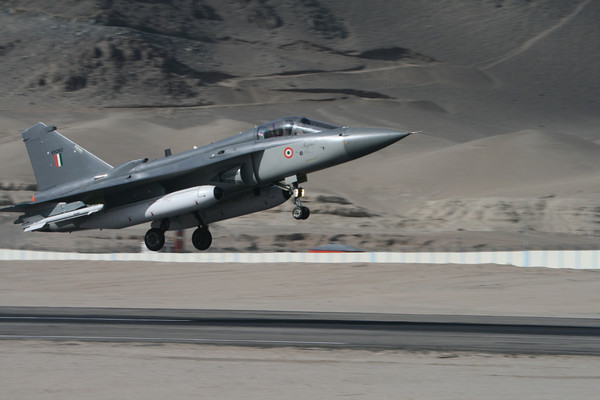
The Missile Defence Agency's Flight Test 06b Ground-Based Interceptor launches from Vandenberg Air Force Base, Calif. on June 22, 2014. A US MDA photo
WASHINGTON (PTI): The US for the first time has successfully tested a ground-based missile defence system which intercepted a simulated incoming missile over the Pacific Ocean.
The USD 40 billion Boeing-managed Ground-based Midcourse Defence (GMD) system aims to protect against long-range ballistic missiles and provide the data necessary to assess the performance of numerous Ballistic Missile Defence System (BMDS) elements for homeland defence.
"This is a very important step in our continuing efforts to improve and increase the reliability of our homeland ballistic missile defence system," said Vice Admiral James D Syring, Missile Defence Agency director.
"We'll continue efforts to ensure our deployed Ground-based Interceptors and our overall homeland defensive architecture continue to provide the warfighter an effective and dependable system to defend the country," he said.
The successful test Sunday followed the system's failure to hit a simulated missile in five of eight previous tests since President George W Bush's administration launched the programme in 2004.
During the test, a long-range ground-based interceptor launched from the Vandenberg Air Force Base, California, intercepted an intermediate-range ballistic missile target launched from the US Army's Reagan Test Site on Kwajalein Atoll in the Republic of the Marshall Islands, the Pentagon said.
This was the first intercept using the second-generation Exoatmospheric Kill Vehicle (EKV), a device attached to the intercept booster, that flew on its own, hit and destroyed the target.
"We made the fixes needed to be made from the last test, which was back in December of 2010," Pentagon spokesman Admiral John Kirby said.
The EKV was released while the interceptor was in space.
It received updates from the GMD system, detected and tracked the target and destroyed it through a high-speed impact.
The kill vehicle manoeuvred to the target, performed discrimination, and intercepted the threat warhead with "hit to kill" technology, using only the force of the direct collision between the interceptor and the target to destroy the target warhead.
"Today's test demonstrated the system's performance under an expanded set of conditions that reflect real-world operational requirements," said Jim Chilton, vice president and general manager, Boeing Strategic Missile & Defence Systems.
"Working together with our government, military and industry partners, we have delivered a capability that continues to demonstrate its readiness and reliability to protect the United States," he said.
The US Navy destroyer USS HOPPER (DDG 70), with its Aegis Weapon System, detected and tracked the target using its on board AN/SPY-1 radar, which provided data to the GMD fire control system via the Command, Control, Battle Management and Communication (C2BMC) system.
A three-stage booster rocket system propelled the interceptor's Capability Enhancement II EKV into the target missile's projected trajectory in space.
The test met several key objectives, including achieving a long flight time and high-velocity closing speeds.
"The operational complexity of the GMD system is a major engineering challenge, but we have drawn upon our unmatched expertise to work toward today's successful intercept," said Norm Tew, Boeing vice president and GMD programme director.
"This test enables us to continually modernise and improve the system, providing even greater capabilities to protect this country," he said.
 Previous Article
Previous Article Next Article
Next Article












The Indian Air Force, in its flight trials evaluation report submitted before the Defence Ministry l..
view articleAn insight into the Medium Multi-Role Combat Aircraft competition...
view articleSky enthusiasts can now spot the International Space Station (ISS) commanded by Indian-American astr..
view article